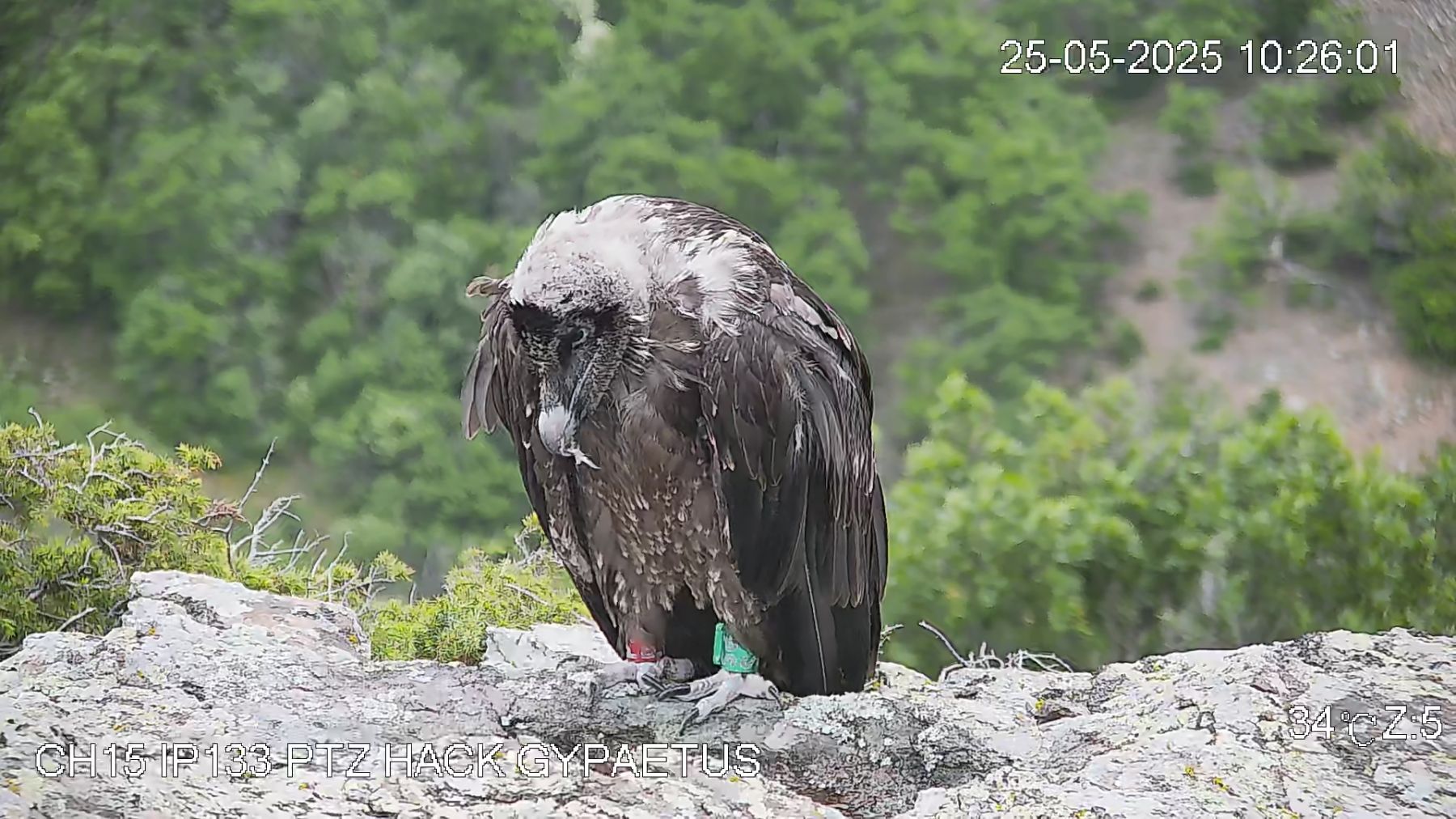
Every year, Bearded Vulture researchers and enthusiasts carry out simultaneous counts across the Alpine chain and other European regions to better estimate the population size of the species. This exercise helps inform the regional monitoring efforts and ultimately contributes to accurate population demography figures.
Understanding the Bearded Vulture population
The International Observation Days (IOD) has become an important event for ornithologist and bird-watchers, who are fascinated by this large bird species. In 2019, the IOD took place between the 12-20 October for the 14th consecutive time! The IOD covers large parts of the Alpine arc (since 2006), parts of the Massif Central (since 2012), the eastern part of the French Pyrenees (since 2016), several regions in Spain (since 2017) and some areas in Bulgaria (since 2018). Last year, the IOD was also conducted in the High Atlas in Morocco for the first time. This monitoring action is organised by the International Bearded Vulture Monitoring network (IBM), which is coordinated by us here at the Vulture Conservation Foundation (VCF).
The number of volunteer observers has been growing every year. Last year, we had 1146 participants, that logged in 832 Bearded Vulture observations. Monitoring this species on a European wide scale would not have been possible without the effort and expertise of the regional coordinators of 14 IBM-partners and several associated organisations. Thanks to this international collaboration, it was possible to compile, evaluate and summarise the observations and estimates over the monitoring area to get an overview of the age class distribution.

Bearded Vulture population estimates
Crossing the observation data with expert knowledge about the presence of territorial and tagged birds, we estimated the Bearded Vulture population size in the Alps to be between 256 and 344 individuals respectively in 2019, of which 53% are adults, 9% subadults, 19% immature and 14% juveniles.
For the small population of the Massif Central, between 4-5 individuals were counted. At least 5, possibly 7, individuals have been observed in the Aude region of the French Pyrenees. In Andalusia and Castilla y León, the Spanish IBM partners estimated the Bearded Vulture population between 32 to 40 Bearded Vultures. Just like in 2018, no Bearded Vultures were observed in Bulgaria where the species went extinct in 1972. In the High Atlas in Morocco, the local partners estimated 6 to 11 Bearded Vultures.
Out of these observations, 71 Bearded Vultures were identified on an individual level — 52 in the Alps, 5 in the Massif Central and 14 in Spain. Each of these identifications provides valuable information about the life-history and survival rates of these birds and contributes to the unique data collection of the IBM, which is monitoring the development of the Bearded Vulture reintroduction project since 1999. Such individual-based information on an international scale is unique. It allows to estimate survival rates and to follow the bird’s life-history, which is an important element to assess the progress of the reintroduction and restocking projects of the species in different European regions. Furthermore, the observation days represent a big public event that helps to increase the awareness for this flagship species.
Download the IOD 2019 report below for all the details.
Report_IOD2019.pdf
Adobe Acrobat Document 3.7 MB
International Bearded Vulture Monitoring Network (IBM)

The International Bearded Vulture Monitoring Network (IBM) is a unique international collaboration led by the Vulture Conservation Foundation between national & natural parks and non-governmental organisations to coordinate the monitoring activities for European Bearded Vulture populations. Through this network, data about the Bearded Vulture in Europe is collected, shared and made available to everyone working for the conservation of the species. The IBM-network also uses this data and comes together to discuss conservation strategies and priorities for this species on an international level. There are currently 16 partners and two associated organisations part of the IBM-network.
If you have any Bearded Vulture observations and photographs in the Alps, please report them here.




